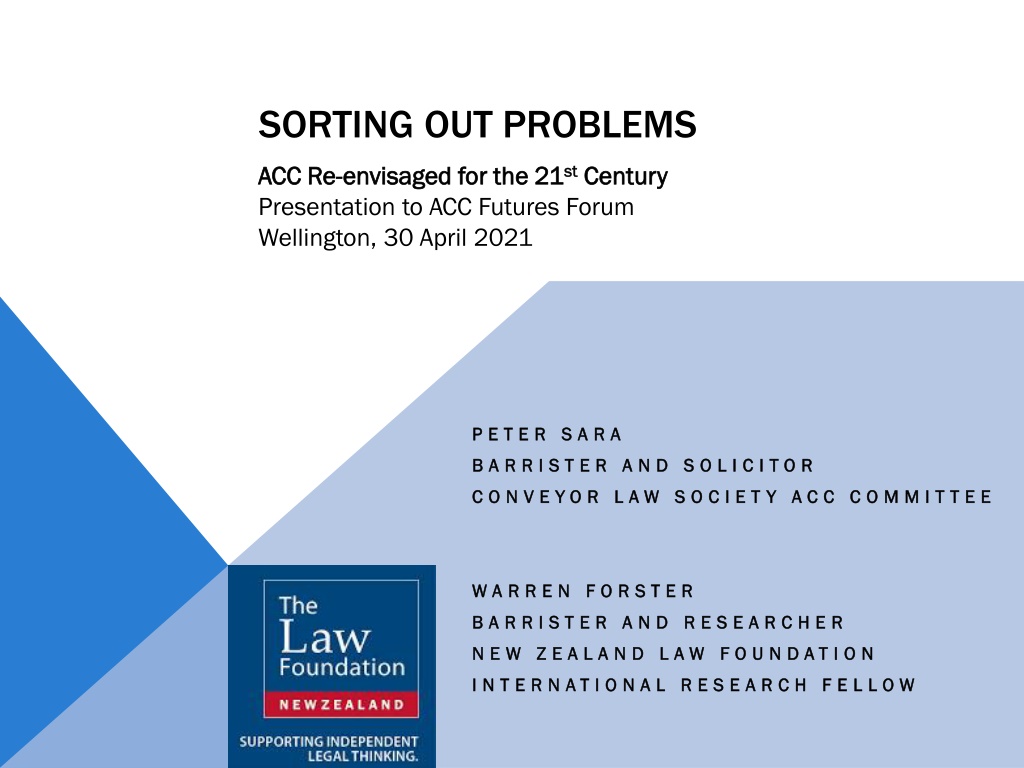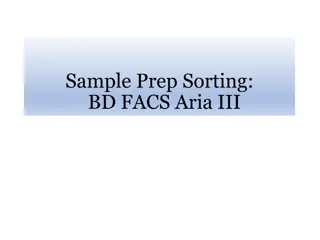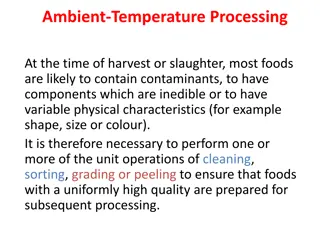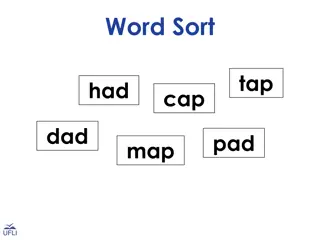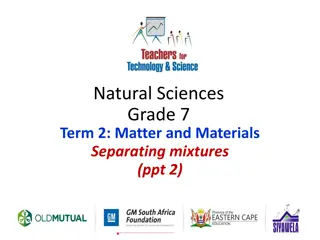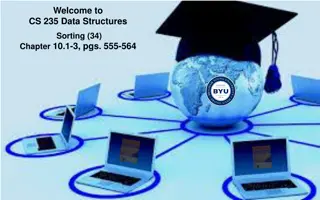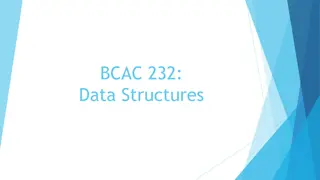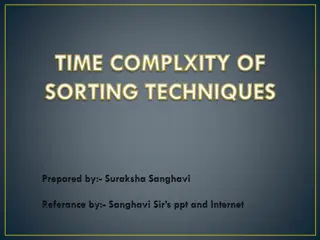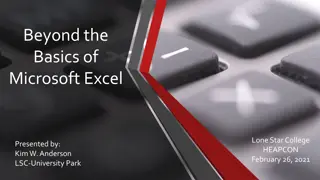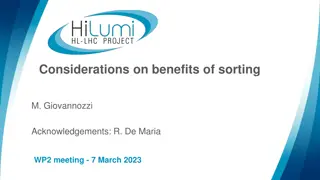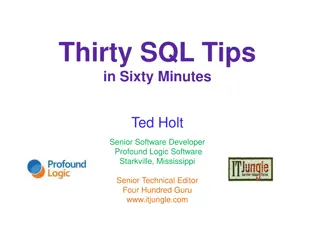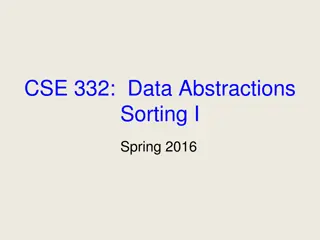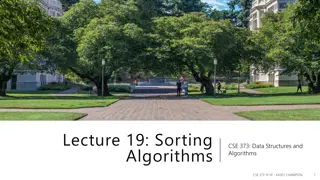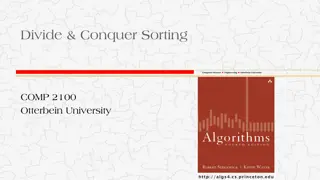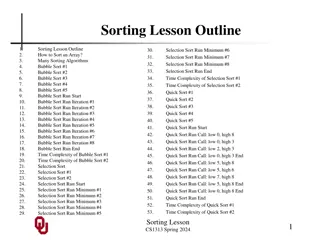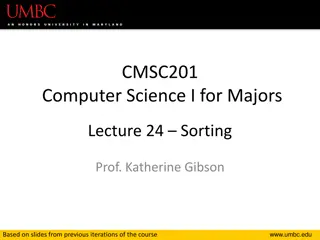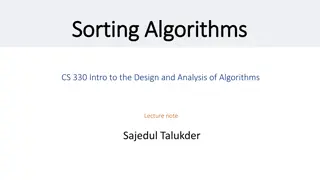SORTING OUT PROBLEMS
This presentation delves into the challenges and opportunities anticipated for the 21st century, focusing on legal matters and societal issues. The speaker, Peter Sarabarris, an expert barrister, solicitor, and conveyancer, sheds light on the complexities and solutions in the legal landscape. With a blend of research and practical insights, the audience gains a comprehensive understanding of the evolving legal framework. Warren Forster, a seasoned barrister and researcher, highlights the importance of the New Zealand Law Foundation and international research fellowships.
Download Presentation

Please find below an Image/Link to download the presentation.
The content on the website is provided AS IS for your information and personal use only. It may not be sold, licensed, or shared on other websites without obtaining consent from the author.If you encounter any issues during the download, it is possible that the publisher has removed the file from their server.
You are allowed to download the files provided on this website for personal or commercial use, subject to the condition that they are used lawfully. All files are the property of their respective owners.
The content on the website is provided AS IS for your information and personal use only. It may not be sold, licensed, or shared on other websites without obtaining consent from the author.
E N D
Presentation Transcript
SORTING OUT PROBLEMS ACC Re ACC Re- -envisaged for the 21 envisaged for the 21st st Century Presentation to ACC Futures Forum Wellington, 30 April 2021 Century P E T E R S A R A P E T E R S A R A B A R R I S T E R A N D S O L I C I T O R B A R R I S T E R A N D S O L I C I T O R C O N V E Y O R L A W S O C I E T Y A C C C O M M I T T E E C O N V E Y O R L A W S O C I E T Y A C C C O M M I T T E E W A R R E N F O R S T E R W A R R E N F O R S T E R B A R R I S T E R A N D R E S E A R C H E R B A R R I S T E R A N D R E S E A R C H E R N E W Z E A L A N D L A W F O U N D A T I O N N E W Z E A L A N D L A W F O U N D A T I O N I N T E R N A T I O N A L R E S E A R C H F E L L O W I N T E R N A T I O N A L R E S E A R C H F E L L O W
STRUCTURE OF PRESENTATION Peter Sara Peter Sara The Serious Shortcoming of the Current System (10 min) The Serious Shortcoming of the Current System (10 min) Warren Forster Warren Forster A framework for the Future System (5 min) A framework for the Future System (5 min) Workshop Workshop Designing the Future System (20 min) Designing the Future System (20 min) Wrap up Wrap up Common elements of design (5 min) Common elements of design (5 min)
THE SERIOUS SHORTCOMING OF THE CURRENT SYSTEM PETER SARA
A FUTURE FRAMEWORK FOR RESOLUTION WARREN FORSTER
TWO SEQUENTIAL PROCESSES: A dispute resolution component comprising A dispute resolution component comprising A person A person- -centred dispute resolution process centred dispute resolution process An independent tribunal An independent tribunal A legal court A legal court- -based process comprising based process comprising A court to determine questions of fact and law A court to determine questions of fact and law An appeal with leave to the Court of Appeal and Supreme Court on questions of law An appeal with leave to the Court of Appeal and Supreme Court on questions of law
GCDR STANDARDS The dispute resolution system must be designed to achieve the highest attainable level of maturity when assessed against the nine standards and 35 key capabilities set out in the Government Centre for Dispute Resolution maturity framework. These standards are: Standard 1 Consistent with Te Tiriti o Waitangi Standard 2 Accessible Standard 3 impartial Standard 4 independent Standard 5 Information about parties and disputes is used appropriately Standard 6 Timely Standard 7 Promote early resolution and support prevention Standard 8 Properly resourced to carry out the service Standard 9 Accountable through monitoring and data stewardship
A PERSON A PERSON- -CENTRED CONSENSUS BASED CENTRED CONSENSUS BASED DISPUTE RESOLUTION MODEL DISPUTE RESOLUTION MODEL The first step in this dispute resolution process must be a consensus-based dispute resolution model. It should not be compulsory however there should be a presumption towards an opportunity to use a process that is timely (within a few weeks) and designed to resolve issues and maintain or rebuild the relationship. A navigation service available to help people must link in with this service.
AN INDEPENDENT TRIBUNAL AN INDEPENDENT TRIBUNAL The second step in the dispute resolution process should be an independent tribunal established to provide an adjudicative process for resolving disputes that cannot be resolved through the consensus-based process (or which are not appropriate to be taken through that process). This tribunal must be administered by the Ministry of Justice and appropriately resourced to carry out its work.
A COURT TO DETERMINE QUESTIONS OF FACT A COURT TO DETERMINE QUESTIONS OF FACT AND LAW AND LAW The final factual determination must be made by a court. . The options are a specialist court the District Court or the High Court. Given the development of a Tribunal and the leave process below the preferred model is the High Court. are significant benefits of using the existing High Court process as it allows all aspects of a dispute to be determined together.
LEAVE BASED APPEALS TO COURT OF APPEAL LEAVE BASED APPEALS TO COURT OF APPEAL & SUPREME COURT & SUPREME COURT The final step must allow legal questions to be determined. It is a fundamental requirement of the rule of law that questions of law can be determined by the Court of Appeal and Supreme Court. Having a leave requirement will allow the Court to determine when cases are appropriate.
A dispute resolution component A dispute resolution component A legal court A legal court- -based process based process
